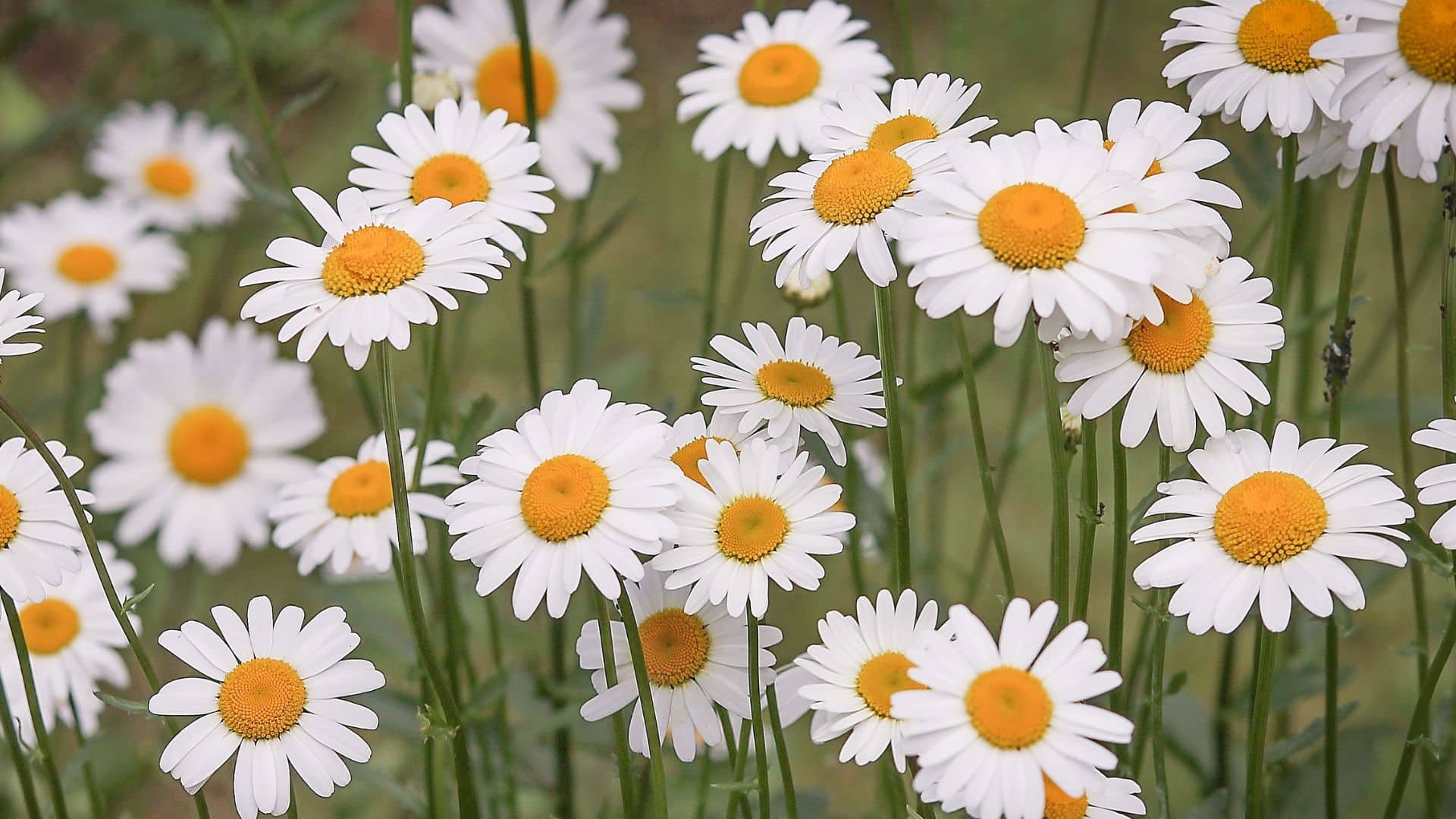
How to Grow and Care for Daisies in Northeast Ohio
Daisies are one of the most cheerful, low-maintenance flowers you can add to a Northeast Ohio garden. With their bright white petals and sunny yellow centers, they fit in perfectly with both cottage-style gardens and neat, formal beds. But to keep them blooming beautifully year after year, you need to understand their needs — and how our region’s climate affects them.
This guide covers everything you need to know about planting, maintaining, and troubleshooting daisies in Northeast Ohio.
Popular Daisy Varieties for Our Area
While “daisy” is a broad term, these varieties are most common in our region:
-
Shasta Daisy (Leucanthemum × superbum) – Hardy perennial that blooms June–August.
-
Oxeye Daisy (Leucanthemum vulgare) – A tough perennial, but considered invasive in some areas.
-
Gerbera Daisy (Gerbera jamesonii) – Grown as an annual or indoor plant in Ohio.
-
English Daisy (Bellis perennis) – Short-lived perennial, often treated as an annual here.
Pro Tip: If you’re planting perennials for a long-term garden bed, Shasta Daisies are your best bet for beauty and reliability.
When & Where to Plant Daisies in Northeast Ohio
Best Planting Time
-
Spring – Plant after the last frost (typically mid-to-late May in Northeast Ohio).
-
Fall – Plant early enough for roots to establish before the first hard frost (mid-to-late September is ideal).
Ideal Location
-
Full sun (at least 6 hours of direct sunlight daily).
-
Well-drained soil — daisies dislike soggy roots.
-
Good air circulation to prevent fungal issues.
Soil Preparation
-
pH: Slightly acidic to neutral (6.0–7.0).
-
Amendments: Work in compost or aged manure before planting for improved drainage and nutrients.
-
Avoid heavy clay without amendments — in Northeast Ohio, our soils can be dense, so consider mixing in sand or organic matter to loosen them.
Watering Guidelines
-
Newly planted daisies – Water deeply 2–3 times per week until established.
-
Established plants – 1 inch of water per week (including rainfall).
-
Avoid overhead watering late in the day — wet leaves at night invite mildew.
Fertilizing
-
Apply a balanced, slow-release fertilizer in early spring as new growth appears.
-
Avoid over-fertilizing — too much nitrogen = lush leaves but fewer blooms.
Deadheading & Pruning
-
Deadheading: Snip spent blooms just above the nearest leaf set to encourage continuous blooming.
-
Mid-season refresh: In late summer, cut stems down by one-third to encourage a fresh flush of blooms.
-
Fall care: After the first frost, cut stems to about 2–3 inches above the soil. Mulch lightly to protect roots.
Thinning & Dividing
-
Every 2–3 years, divide daisies in early spring or early fall to:
-
Prevent overcrowding (which reduces blooms)
-
Improve airflow and disease resistance
-
Create new plants for other areas of your garden
-
In Northeast Ohio, overcrowded daisies are a common reason for reduced flowering — spacing plants 12–18 inches apart helps.
Pest & Disease Management
While daisies are generally hardy, watch for:
-
Aphids – Spray with insecticidal soap or blast with a hose.
-
Leaf spot & powdery mildew – Avoid overhead watering and remove affected leaves.
-
Slugs – Use beer traps or diatomaceous earth around plants.
Winter Care
-
Daisies are hardy in USDA zones 4–9, which covers Northeast Ohio.
-
In late fall, cut stems back and apply a light mulch layer to protect crowns from freeze-thaw cycles.
-
Avoid heavy, wet mulch — it can rot the crown.
Companion Planting
Daisies pair well with:
-
Coneflowers (Echinacea)
-
Black-eyed Susans (Rudbeckia)
-
Coreopsis
-
Salvia
-
Lavender
These combinations create a long-blooming, pollinator-friendly garden.
Common Problems & Fixes
| Problem | Cause | Fix |
|---|---|---|
| Few or no blooms | Too much shade or nitrogen | Move to sunnier spot, reduce fertilizing |
| Floppy stems | Overcrowding or lack of sun | Thin plants, stake if needed |
| Yellow leaves | Poor drainage or overwatering | Improve soil drainage |
Final Tips for Success in Northeast Ohio
-
Give daisies plenty of sun and space.
-
Keep up with deadheading and occasional division.
-
Mulch to retain soil moisture and suppress weeds — but leave space around the crown.
-
Remember: healthy daisies reward you with months of cheerful blooms.
Thinking about a professional flower bed refresh?
We help Northeast Ohio homeowners restore and maintain perennial beds so they stay beautiful and manageable year-round. Whether it’s thinning overcrowded daisies, pulling weeds, or adding fresh mulch, we’ve got you covered.
Some links on this page are affiliate links. This means we get a commission for the products we recommend at no additional cost to you. This is how we are able to give all these articles to you at no cost.




No Comments
Sorry, the comment form is closed at this time.